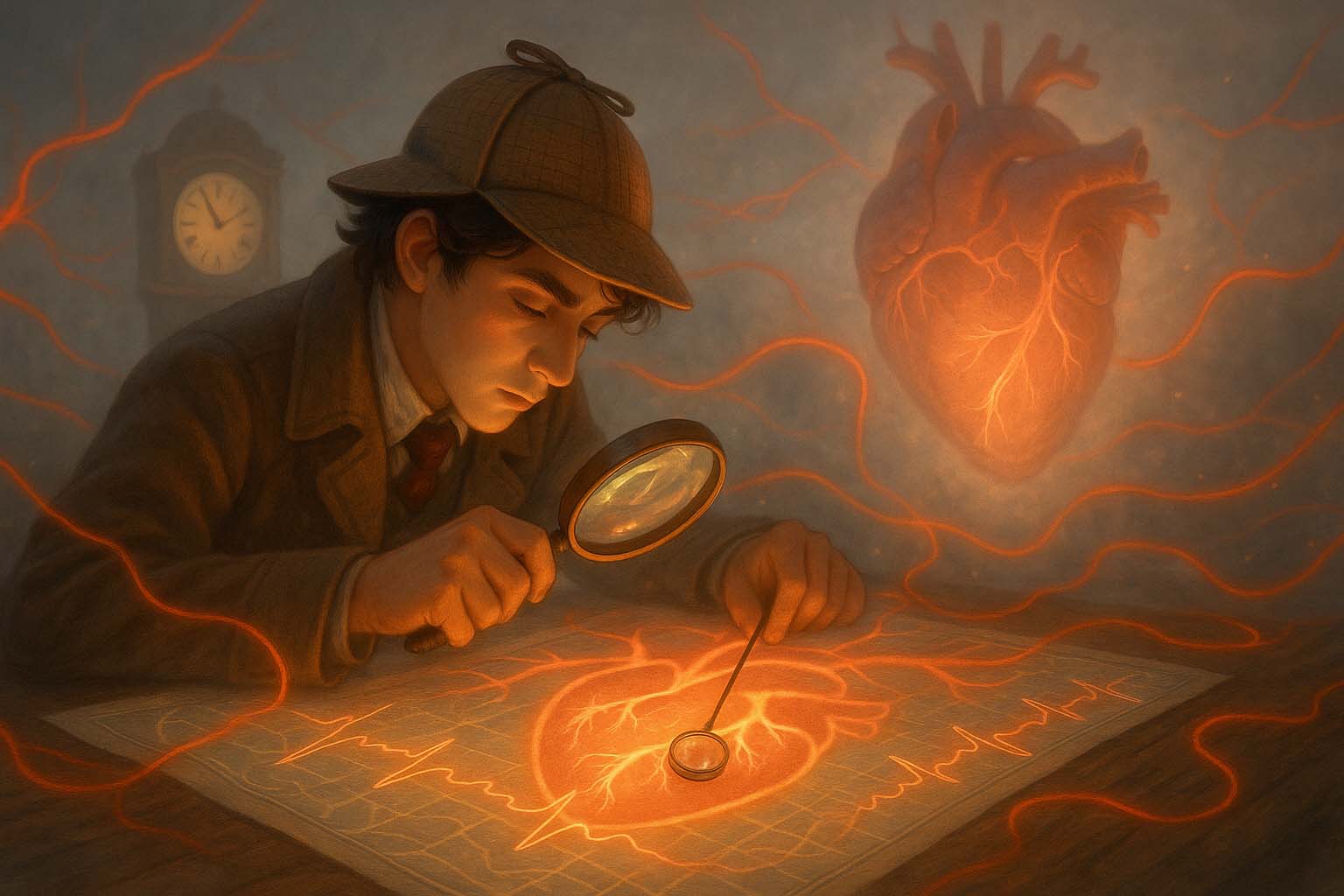
Cardiology
- Posted by admin
- Categories Organ & Systems Medicine
- Date May 23, 2025
- Comments 0 comment
The Pulse Detective’s Domain – Cracking the Cases of Rhythm, Pressure, and Broken Hearts
1. Introduction: The Scene of the Specialty
Step into the shoes of a Cardiology sleuth.
Here, every heartbeat is a clue—every murmur, a message. Cardiology detectives work in the chambered citadel of the human body, decoding silent struggles and dramatic collapses alike. Their mysteries range from whispered murmurs to sirens of cardiac arrest. With stethoscope in one hand and ECG in the other, they listen not just to the heart’s beat—but to its story. Welcome to a world where a skipped beat can signal a storm—and speed, precision, and care save lives in real time.
2. Key Mysteries They Solve (Common Conditions)
These detectives specialise in solving cases involving:
- Acute Coronary Syndrome (ACS) – a race against time wrapped in chest pain and ECG tracings.
- Arrhythmias – from the innocent flutter to the life-threatening fibrillation.
- Heart Failure – the chronic conundrum of a tired, overloaded pump.
- Valvular Disease – clicks, whooshes, and murmurs that tell of worn mechanisms and pressure shifts.
Each case requires electrical savvy, hemodynamic insight, and the instinct to act before the next beat.
3. Their Trusted Tools & Techniques
Every detective has their kit—and in Cardiology, tools may include:
- The ECG – the cardiologist’s signature cipher, decoded in seconds.
- Echocardiography – a window into walls, valves, and chambers.
- Stress Testing & Holter Monitoring – tracing triggers, tempo, and transient changes.
- Invasive Tools – angiograms, stents, and catheters for when internal recon is needed.
Cardiology combines technology, touch, and timing like few other fields.
4. The Charms of This Field: Why It Captivates the Curious
- Instant Impact: Minutes matter—intervention saves muscle, memory, and life.
- Dynamic Diagnostics: Learn the language of murmurs, rhythms, and pressure curves.
- Tech-Driven Care: From pacemakers to TAVIs, cardiology embraces innovation.
- Symbolic Centrality: The heart is both metaphor and machine—emotional and electrical.
This specialty pulses with pace, precision, and poetry.
5. Challenges: The Toughest Cases They Face
- Time-Sensitive Emergencies – A delay of minutes can cost a life.
- Overlap with Other Systems – Chest pain is a crowded symptom with many imposters.
- Chronic Complexity – Heart failure demands long-term strategy, not just acute fixes.
- Emotional Weight – Breaking bad news about blocked arteries or poor prognosis carries heaviness.
But the veteran Cardiology detective knows: the best intervention is often anticipation.
6. Famous Cases and Hallmark Clues
- The “Classic Presentation” – Crushing central chest pain radiating to the left arm, ST elevation, troponin spike.
- The “Zebra” – Brugada syndrome or Takotsubo cardiomyopathy mimicking infarction.
- The “Aha Moment” – Spotting AF on a random ECG in a dizzy patient, preventing a future stroke.
7. Your Training Trail: How to Join the Investigation
To become a Cardiology detective:
- Build a solid base in general medicine—cardiac clues often masquerade.
- Master ECGs like second language and echo as your go-to visual scan.
- Learn to think fast, act faster, and reflect deeply afterward.
- Consider subspecialties: interventional, electrophysiology, imaging, heart failure, or congenital.
Whether in the cath lab or clinic, you’ll learn to read lives one heartbeat at a time.
8. Final Words: The Signature of the Cardiology Detective
Cardiology detectives live by rhythm, risk, and rapid decision-making.
They tune into the body’s most vital music—and know how to intervene when that rhythm stumbles.
But more than mechanics, they honour the emotional weight of the human heart.
So if you’re drawn to stories told in pulses, and puzzles solved between beats—
then this is the specialty for your clinical cadence.



